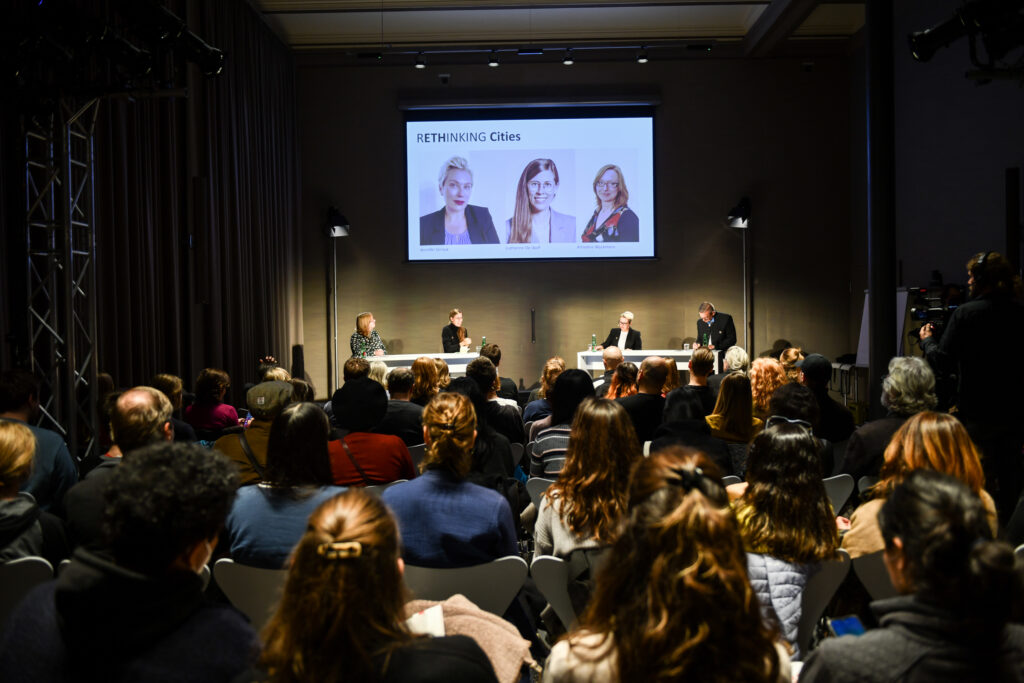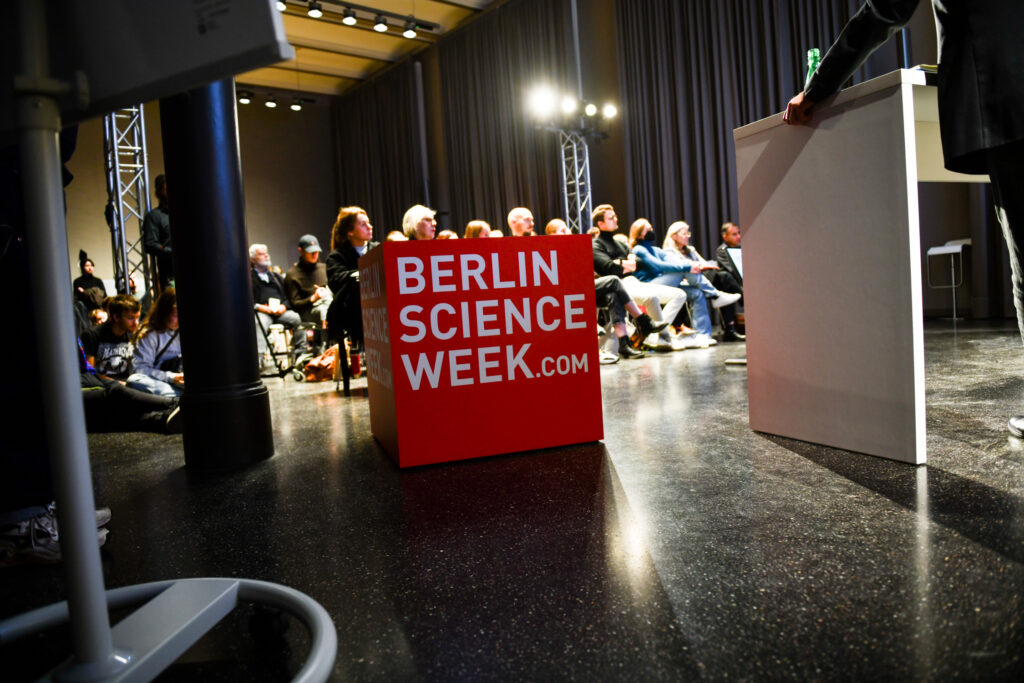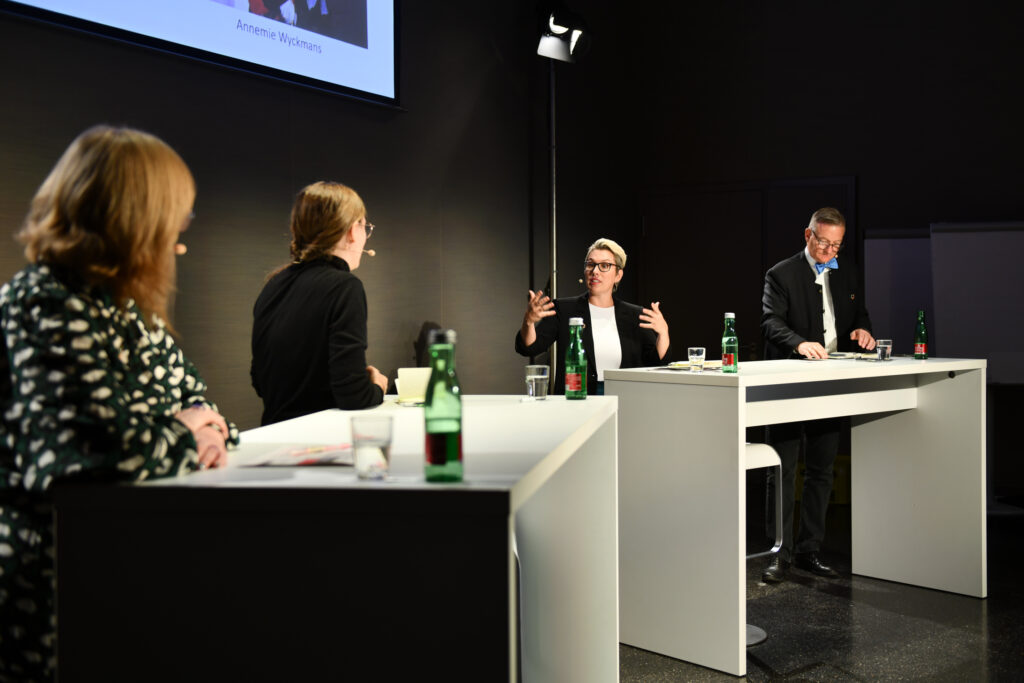The time has come to rethink our cities. On the occasion of her participation in Berlin Science Week, ETH Circle Member and ETH Alumna Jennifer Giroux proposes four principles to help guide the process.
It’s Time to Rethink Our Cities
Jennifer Giroux, 1 December 2022
Cities are phenomenal, exciting spaces – made up of complex social, technical, and ecological systems that are dynamic, ever-evolving, and growing. That’s right, growing. More than half of the world’s population already lives in cities, and by 2050, 7 out of 10 people will live within the urban terrain. But, while cities are a huge draw for people – most of whom seek expanded economic, cultural, and social opportunities and access to the abundant amenities that come with urban life – they can also be a struggle to live in. Issues such as mobility challenges (e.g. lack of transportation access, aging infrastructure, congested roads), the rising cost of living, lack of adequate and/or affordable housing, and air and noise pollution are just a handful of the significant issues that city residents are dealing with, across the globe, and in myriad ways. On top of all this, there is the issue of climate change and its relationship with cities. Currently, 80% of global GDP is generated in cities – making them not only critical to our economies but also critical to transforming our economies to reach CO2 neutrality and thus mitigate climate and disaster risks that are within view, if not already at our doorstep.
All of this brings us to the point: it’s time to rethink our cities to be places that are more equitable, livable, desirable, and sustainable.
During the Berlin Science Week, ETH curated a panel on Rethinking Cities that dived into this topic and, through that, identified some core design principles that can serve as the driving forces for the climate transition in cities and communities.
All of this brings us to the point: it’s time to rethink our cities to be places that are more equitable, livable, desirable, and sustainable.
During the Berlin Science Week, ETH curated a panel on Rethinking Cities that dived into this topic and, through that, identified some core design principles that can serve as the driving forces for the climate transition in cities and communities.
Principle 1: Design with beauty and regeneration
Prof. Catherine De Wolf, Assistant Professor of Circular Engineering for Architecture at the Swiss Federal Institute of Technology Zurich (ETH Zurich), reminded us that designing for the future is not just about building sustainably, but it’s also about building the beautiful. Buildings constructed with reused and reimagined materials, as well as designed for architectural beauty and interest, will not only serve the environment today but also in the future. Why? Because when we build with beauty, it is more likely that such a building will be preserved over time. Designer Thomas Heatherwick talks about this in his TED talk “The Case for Radically Human Buildings,” where he ponders why modern-day architecture has become so dull and recommends that cities need inspiring architecture and soulful buildings that people will cherish and work to preserve for years to come.
Prof. Catherine De Wolf, Assistant Professor of Circular Engineering for Architecture at the Swiss Federal Institute of Technology Zurich (ETH Zurich), reminded us that designing for the future is not just about building sustainably, but it’s also about building the beautiful. Buildings constructed with reused and reimagined materials, as well as designed for architectural beauty and interest, will not only serve the environment today but also in the future. Why? Because when we build with beauty, it is more likely that such a building will be preserved over time. Designer Thomas Heatherwick talks about this in his TED talk “The Case for Radically Human Buildings,” where he ponders why modern-day architecture has become so dull and recommends that cities need inspiring architecture and soulful buildings that people will cherish and work to preserve for years to come.
Principle 2: Place people, equity, and inclusion at the center
More so than ever, cities have become places with sweeping inequities and imbalances – where some people are thriving, and others are barely surviving. This is often due to significant design flaws from poor urban planning practices. For example, top-down urban planning decisions in a city like Detroit resulted in a city that once had an extensive public transportation system to one built for cars and not people – creating massive health and mobility injustices for its residents. But how do we create more inclusive and equitable cities? What does that look like, and why is it essential for our sustainable transformation? For the panel, this was about putting people at the center of rethinking our cities. This means ensuring that residents are brought into the design process to collectively advocate for their interests, needs, and desires and develop a more profound sense of belonging, connection, and agency (all of which are essential qualities for building societal resilience). If this doesn’t happen, we’re looking at a scenario where rising inequality and exclusion within cities can and will derail development progress as climate and disaster risks multiply. As a solution for this, panelist Annemie Wyckmans shared work that she is doing to bring various stakeholders together from the public and private sector, academia, and civil society to develop solutions for their city – an approach that involves a multi-step process to discuss ideas, test them, see if they succeed and if not, try again. This is how you create a more just and equitable city for all.
More so than ever, cities have become places with sweeping inequities and imbalances – where some people are thriving, and others are barely surviving. This is often due to significant design flaws from poor urban planning practices. For example, top-down urban planning decisions in a city like Detroit resulted in a city that once had an extensive public transportation system to one built for cars and not people – creating massive health and mobility injustices for its residents. But how do we create more inclusive and equitable cities? What does that look like, and why is it essential for our sustainable transformation? For the panel, this was about putting people at the center of rethinking our cities. This means ensuring that residents are brought into the design process to collectively advocate for their interests, needs, and desires and develop a more profound sense of belonging, connection, and agency (all of which are essential qualities for building societal resilience). If this doesn’t happen, we’re looking at a scenario where rising inequality and exclusion within cities can and will derail development progress as climate and disaster risks multiply. As a solution for this, panelist Annemie Wyckmans shared work that she is doing to bring various stakeholders together from the public and private sector, academia, and civil society to develop solutions for their city – an approach that involves a multi-step process to discuss ideas, test them, see if they succeed and if not, try again. This is how you create a more just and equitable city for all.
Principle 3: Ensure deep, contextual understanding
The rethinking of how we build, how we move, how we organize, how we collaborate, how we create, and how we power our cities is no easy feat. Instead, it will require social, political, and technological innovation rooted in a deep understanding of the social and economic contexts in which solutions will be implemented. In other words, it will require all of us to slow down, listen, and understand each other if we are to transform our interests, behaviors, habits, etc., to meet the demands that the sustainable transformation will require of us. For example, implementing new mobility solutions, automating the reuse of materials in architecture, changing building codes to be in line with sustainability targets, and installing more trees in neighborhoods (to combat pollution and rising heat), are all examples of solutions that are being proposed within the realm of rethinking cities. And yet, while we may have a lot of ideas on “what to do,” the bigger question is “how to do it” in a way that gains stakeholder support and adoption. To understand the how, we need to invest heavily in understanding the myriad stakeholder groups – what are their interests and actions, how do you connect with them, how do you motivate them, what are their concerns, etc. By engaging and answering such questions, we can begin to customize stakeholder messaging and engagement strategies that support the transformation to come.
The rethinking of how we build, how we move, how we organize, how we collaborate, how we create, and how we power our cities is no easy feat. Instead, it will require social, political, and technological innovation rooted in a deep understanding of the social and economic contexts in which solutions will be implemented. In other words, it will require all of us to slow down, listen, and understand each other if we are to transform our interests, behaviors, habits, etc., to meet the demands that the sustainable transformation will require of us. For example, implementing new mobility solutions, automating the reuse of materials in architecture, changing building codes to be in line with sustainability targets, and installing more trees in neighborhoods (to combat pollution and rising heat), are all examples of solutions that are being proposed within the realm of rethinking cities. And yet, while we may have a lot of ideas on “what to do,” the bigger question is “how to do it” in a way that gains stakeholder support and adoption. To understand the how, we need to invest heavily in understanding the myriad stakeholder groups – what are their interests and actions, how do you connect with them, how do you motivate them, what are their concerns, etc. By engaging and answering such questions, we can begin to customize stakeholder messaging and engagement strategies that support the transformation to come.
Principle 4: Be the citizen
The rethinking of our cities will require more from everyone. It will require all of us to “citizen” differently. What does that mean? It means that operating in silos or being disengaged will not cut it. For the private sector, it will require businesses that are working in urban innovation and solutions to think and behave differently. Shifting from looking at markets to seeing communities; designing for residents rather than customers. It requires a more systematic, holistic approach in which the business must also see themselves as a resident – a citizen of the city – if solutions will not only be viable but also sustainable and add true value to the transformation goals. It requires seeking out the city to understand challenges rather than just throwing “cool solutions” into the “market”. For the public sector – in this case, city leadership - it requires convening stakeholder meetings with a cross-section of groups and facilitating multi-sector partnerships to co-create solutions. Finally, for residents, it means shifting our relationship with our cities to become more informed, connected, and participatory in transformative processes. On a practical level, this means organizing within neighborhood groups to be informed on city matters; connecting with each other and deepening relationships with ourselves, our community, and our city; showing up for each other, and publicly participating in ways that help create a more equitable and sustainable city. Brought together, we have to think, work, and solve systemically rather than individually. And, we all need to learn/relearn what it means to citizen (as a resident or special interest like a business) for each other and for our world.
To relive the Rethinking Cities session organised by ETH Zurich at Berlin Science Week, check out the recording below:
The rethinking of our cities will require more from everyone. It will require all of us to “citizen” differently. What does that mean? It means that operating in silos or being disengaged will not cut it. For the private sector, it will require businesses that are working in urban innovation and solutions to think and behave differently. Shifting from looking at markets to seeing communities; designing for residents rather than customers. It requires a more systematic, holistic approach in which the business must also see themselves as a resident – a citizen of the city – if solutions will not only be viable but also sustainable and add true value to the transformation goals. It requires seeking out the city to understand challenges rather than just throwing “cool solutions” into the “market”. For the public sector – in this case, city leadership - it requires convening stakeholder meetings with a cross-section of groups and facilitating multi-sector partnerships to co-create solutions. Finally, for residents, it means shifting our relationship with our cities to become more informed, connected, and participatory in transformative processes. On a practical level, this means organizing within neighborhood groups to be informed on city matters; connecting with each other and deepening relationships with ourselves, our community, and our city; showing up for each other, and publicly participating in ways that help create a more equitable and sustainable city. Brought together, we have to think, work, and solve systemically rather than individually. And, we all need to learn/relearn what it means to citizen (as a resident or special interest like a business) for each other and for our world.
To relive the Rethinking Cities session organised by ETH Zurich at Berlin Science Week, check out the recording below:
About the Author

Jennifer Giroux
Jennifer Giroux is a Detroit-based strategy and research professional who works in the social impact field at the intersection of social resilience, stakeholder engagement, and organizational integrity, responsibility, and risk. With a background in Anthropology, she specializes in solving for big social challenges that address systemic inequities. She has advised and led projects with hundreds of large organizations across – including Novartis, Shell, Pearson, NewGlobe, Ford, United Nations, Cisco, NATO, EU, Center for Security Studies, United States Institute of Peace, etc. – on strategy, political and social risk, urban design & resilience, culture, public-private partnerships, stakeholder engagement, social innovation, and diversity equity & inclusion. As a natural collaborator who is passionate about moving humanity forward, she has published widely in academic and policy publications and has 20 years of global experience in over 15 countries, across 6 continents – with extensive time performing field research and leading projects in South Asia, Middle East, East Africa, and West Africa. In Detroit, Jennifer is a community leader and active in reimagining and rebuilding this great city. She is an active member of the ETH Circle. You can get to know her and her story in the We Are ETH Podcast, Episode 2: https://circle.ethz.ch/podcast/





